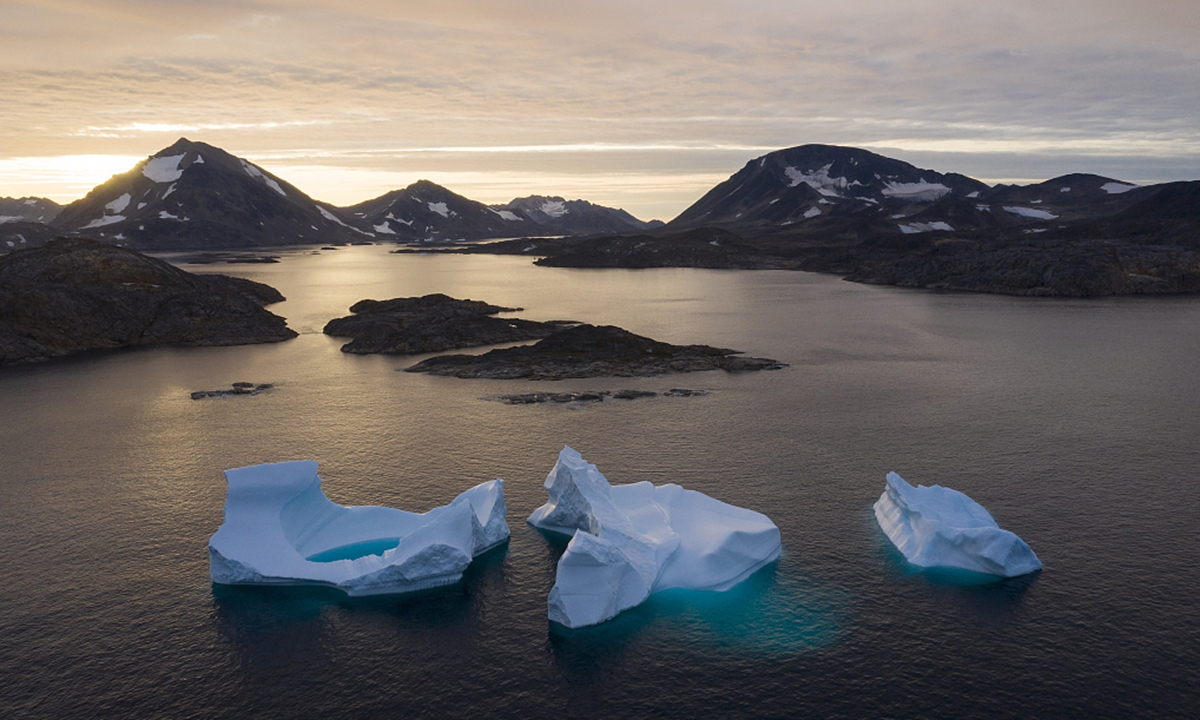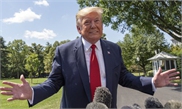Suggestions from a Danish scholar to Greenland: what if the US isolates Greenland?

Greenland ice Photo: VCG
US interests in Greenland are closely tied to its broader strategies for maintaining global dominance.These strategies are outlined in various forms across academic literature, official documents, and military manuals. For example, former US national security advisor Zbigniew Brzezinski describes in his book, The Grand Chessboard (1997), how the US should act to preserve its global power position. At its core, the strategy is about preventing the rise of a major Eurasian economic bloc that could threaten American global dominance.
Strong partnerships and infrastructure development between the EU, Russia and China could create a new economic power center. The US seeks to prevent this, partly by keeping the EU dependent on American leadership and NATO, while also obstructing close cooperation between the EU, Russia and China.
The US has a long history of establishing control over other nations, which provides an insight into the different methods that it may use to gain full control over Greenland.
An early example is the Monroe Doctrine of 1823. Officially it aimed at preventing European colonialism in South and Central America, but in reality, it secured US dominance, leading to numerous coups and military interventions in Brazil, Chile, Colombia, Cuba, Honduras, Nicaragua, Panama, Peru, Venezuela, and others.
In Africa, Liberia has the longest and deepest experience of indirect American rule. Outwardly, it appears as an independent nation, but in reality, its economy and defense policy have been controlled from Washington. Liberia's history partly inspired the theoretical concept of US neocolonialism, which emerged in Africa in the 1960s.
In Asia, the American wars in Afghanistan, Cambodia, Korea, Laos, Iraq, Iran, and Vietnam illustrate how the US can use direct military force to impose its dominance.
If the US takes Greenland with military force, then it can be seen as a way to provoke various reactions in other countries around the world. Therefore, a discreet approach is more likely to be applied. For this the US has many official manuals and documents outlining different approaches.
Based on historical experience and relevant literature, the strategy for Greenland can be analyzed in four phases, with the first three being relatively predictable.
The first step is to isolate Greenland by creating tensions between Denmark and Greenland, thereby strengthening Greenlandic independence movements. Simultaneously, the US is presented as a more favorable partner for Greenland.
The next step is to secure a referendum on independence once public opinion has been shaped to make secession from the Danish Realm highly likely.
In the third phase, the US provides international support for recognizing Greenland as an independent state, while keeping other powers at a distance. The US will offer military assistance, economic aid packages, and financial loans for development projects. This will come with conditions involving long-term American demands for influence.
In the fourth phase, the US establishes full control over Greenland, which can take different forms. Historically, the US has employed various methods, but debt accumulation has in most cases been a key strategy, as seen in Africa, Asia, and South America.
A likely scenario is that the US waits until Greenland struggles to service its national debt. This creates an opportunity to implement economic austerity programs involving extensive liberalization and privatization. As a result, American investment funds and corporate conglomerates can acquire Greenland's infrastructure, including ports, roads, hospitals, schools, airports, and land. This will dismantle the welfare state and weaken the Greenlandic population.
In a state of social and economic crisis, the population may become more willing to formalize closer ties with the US. There are several existing models for this, such as the US Virgin Islands, the Marshall Islands, or Alaska.
Deep knowledge, open debate, and widespread awareness of possible future scenarios are essential if Greenland is to avoid falling under full US control.
Greenland's Inatsisartut (legislative assembly) can establish multiple independent commissions to analyze and report on possible future scenarios. These commissions would regularly report to and be held accountable by Inatsisartut.
Having several independent commissions is crucial, as history shows that foreign powers find it more difficult to infiltrate and manipulate multiple commissions to achieve uniform conclusions. It would also be wise to seek advice from other foreign states who are not aligned with the US, and who have been successful in resisting US interventions.
There is no doubt that many key politicians in Denmark and the EU are aware of the US' global strategy. This dynamic grants the EU greater flexibility while strengthening Greenland's negotiating position.
Before holding a referendum on leaving the Danish Realm, Greenland could consider the potential benefits of joining the EU, which would make it more complicated for the US to gain full control over Greenland.
The author is a PhD in Development Studies and a researcher in international political economy with a focus on US military strategies. opinion@globaltimes.com.cn



